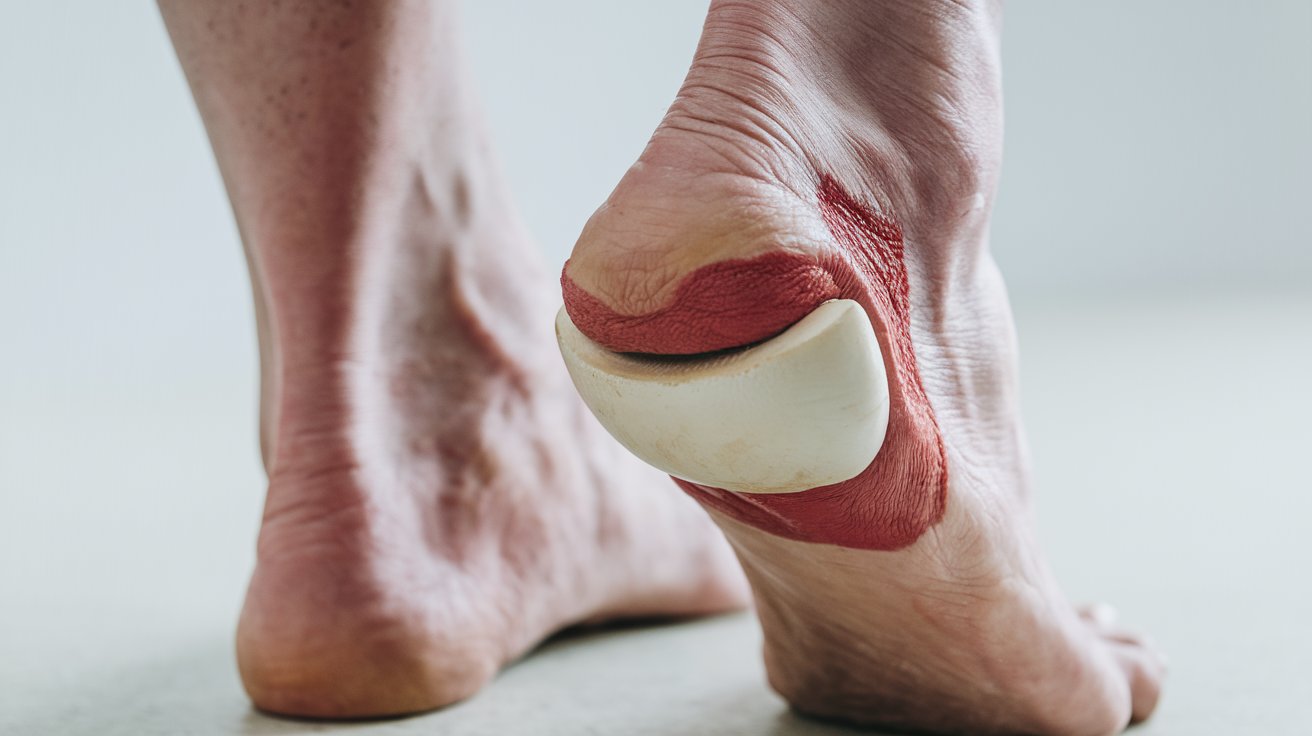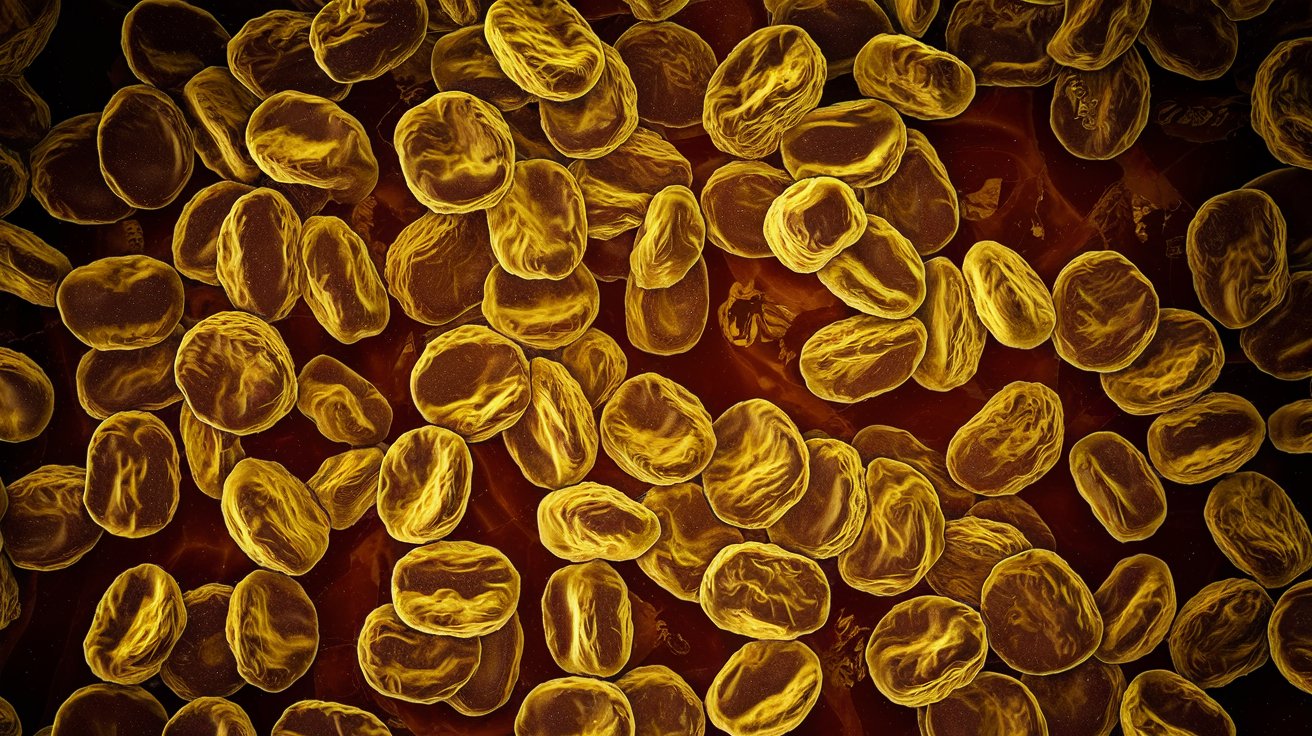
What is Haglund's Syndrome? Haglund's Syndrome, also known as Haglund deformity or retrocalcaneal exostosis, is a painful condition affecting the heel. It involves a bony bump on the back of the heel, inflammation, and pain where the Achilles tendon attaches to the calcaneus. Often called "pump bump" due to its association with high-heeled shoes, this condition is more common in middle-aged individuals, especially women. Symptoms include a visible bony enlargement, severe pain, swelling, and redness. Diagnosis typically involves clinical evaluation and imaging techniques like X-rays or MRI. Treatment ranges from conservative methods like orthotics and anti-inflammatory medications to surgical intervention in severe cases.
What is Haglund's Syndrome?
Haglund's Syndrome, also known as Haglund deformity or retrocalcaneal exostosis, is a condition that affects the heel. It involves a painful bony enlargement on the back of the heel, often causing discomfort and inflammation.
-
Definition and Terminology: Haglund's syndrome is a painful condition of the heel that involves the triad of insertional Achilles tendinopathy, Haglund deformity (posterosuperior calcaneal exostosis), and retrocalcaneal bursitis.
-
History and Etymology: The condition was first described by Swedish orthopedic surgeon Patrick Haglund in 1927. The term "Haglund's deformity" is often used interchangeably with "Haglund's syndrome."
-
Common Names: Haglund's syndrome is also known as retrocalcaneal exostosis and "pump bump," due to its association with high-heeled shoes, particularly pumps.
How Common is Haglund's Syndrome?
Understanding the prevalence and occurrence of Haglund's Syndrome can help in recognizing its impact on different populations.
-
Prevalence: Haglund's syndrome is a very common clinical condition, but its exact prevalence is not well documented. It is more common in middle-aged individuals, with females being more affected than males.
-
Bilateral Occurrence: The condition often affects both feet, although it can occur unilaterally.
What Causes Haglund's Syndrome?
Several factors contribute to the development of Haglund's Syndrome. Knowing these can help in identifying and managing the condition.
-
High Heels: Wearing high-heeled shoes, especially those with stiff backs, can exacerbate the condition by increasing pressure on the heel.
-
Tight Achilles Tendon: A tight Achilles tendon can lead to irritation and inflammation in the heel area.
-
High Foot Arch: Individuals with high foot arches may be more prone to developing Haglund's syndrome due to increased pressure on the heel.
-
Genetic Factors: Hereditary factors may also play a role in the development of this condition.
What are the Symptoms of Haglund's Syndrome?
Recognizing the symptoms is crucial for early diagnosis and treatment.
-
Bony Bump: A visible bony enlargement on the back of the heel.
-
Pain: Severe pain in the area where the Achilles tendon attaches to the calcaneus, which is often worse after rest.
-
Swelling: Swelling and redness around the bony enlargement.
-
Inflammation: Inflammation of the retrocalcaneal bursa, which is the fluid-filled sac between the tendon and bone.
How is Haglund's Syndrome Diagnosed?
Diagnosis involves a combination of clinical evaluation and radiological findings.
-
Clinical Evaluation: A healthcare provider will examine the heel for signs of pain, swelling, and bony enlargement.
-
Radiographic Features: Weight-bearing lateral foot radiographs are commonly used to characterize bony changes, such as the presence of a bony spur or Haglund deformity.
-
Ultrasound and MRI: These imaging techniques can help assess soft tissue inflammation and bursitis, which are often associated with Haglund's syndrome.
What Conditions Mimic Haglund's Syndrome?
Differentiating Haglund's Syndrome from other conditions causing heel pain is essential for accurate diagnosis.
-
Calcaneal Bursitis: Tenderness is typically palpable on the medial or lateral sides of the heel.
-
Achilles Tendinosis: Tenderness is present distally at the insertion of the Achilles tendon on the calcaneus.
-
Plantar Fasciitis: Pain and tenderness are most commonly over the sole of the foot.
-
Avulsion of Calcaneal Tendon: A defect or gap is palpable in the tendon, and the Thompson test is positive.
How is Haglund's Syndrome Treated?
Treatment options range from conservative methods to surgical interventions.
-
Conservative Treatment: Heel height modification, orthotics, physiotherapy, anti-inflammatory medication, and local steroid injections are common non-surgical treatments.
-
Surgical Treatment: Surgical excision involves removing the excess bone from the heel to reduce pressure on the bursa and soft tissue. This is typically reserved for cases that do not respond to conservative treatment.
-
Surgical Procedure: During surgery, the excess bone is removed, and the bone may be smoothed and filed down to reduce pressure on the bursa and soft tissue. Patients may be given general anesthesia, and a boot or cast is often used to protect the foot during recovery.
-
Recovery Period: The recovery period after surgery can take up to eight weeks. Patients may need to use crutches for a few days or weeks, and the wound will need to remain bandaged for at least seven days. Follow-up X-rays may be necessary to ensure proper healing.
How Can Haglund's Syndrome Be Prevented?
Prevention strategies can help reduce the risk of developing Haglund's Syndrome.
-
Avoid Tight Heels: Steer clear of shoes with tight, stiff heels, especially for long periods.
-
Avoid Hard Surfaces: Avoid running on hard surfaces or uphill.
-
Wear Open-Back Shoes: Opt for open-back shoes or those made of soft materials.
-
Wear Fitted Socks: Wear fitted, padded socks with non-slip soles.
-
Stretching Exercises: Perform stretching exercises to prevent tightening of the Achilles tendon.
Additional Tips for Managing Haglund's Syndrome
Here are some extra tips to help manage the condition and alleviate symptoms.
- Icing for Pain Relief: Applying an ice pack wrapped in a thin towel to the bony enlargement can help reduce pain. This should be done for 20 minutes at a time with a 40-minute break in between.
Key Points to Remember
Haglund's syndrome, often called "pump bump," is a painful condition involving a bony enlargement on the back of the heel. It’s more common in middle-aged individuals, especially women, and can affect both feet. High heels, tight Achilles tendons, and high foot arches are major risk factors. Symptoms include a visible bump, pain, swelling, and inflammation.
Diagnosis involves clinical evaluation and imaging like X-rays, ultrasound, or MRI. Treatment ranges from conservative methods like heel height modification, orthotics, and anti-inflammatory meds to surgical options for severe cases. Recovery from surgery can take up to eight weeks.
Preventive measures include avoiding tight shoes, running on hard surfaces, and doing stretching exercises. Proper diagnosis and timely treatment are crucial for managing symptoms and preventing complications. Understanding these aspects can help you better manage or avoid Haglund's syndrome.
Was this page helpful?
Our commitment to delivering trustworthy and engaging content is at the heart of what we do. Each fact on our site is contributed by real users like you, bringing a wealth of diverse insights and information. To ensure the highest standards of accuracy and reliability, our dedicated editors meticulously review each submission. This process guarantees that the facts we share are not only fascinating but also credible. Trust in our commitment to quality and authenticity as you explore and learn with us.


